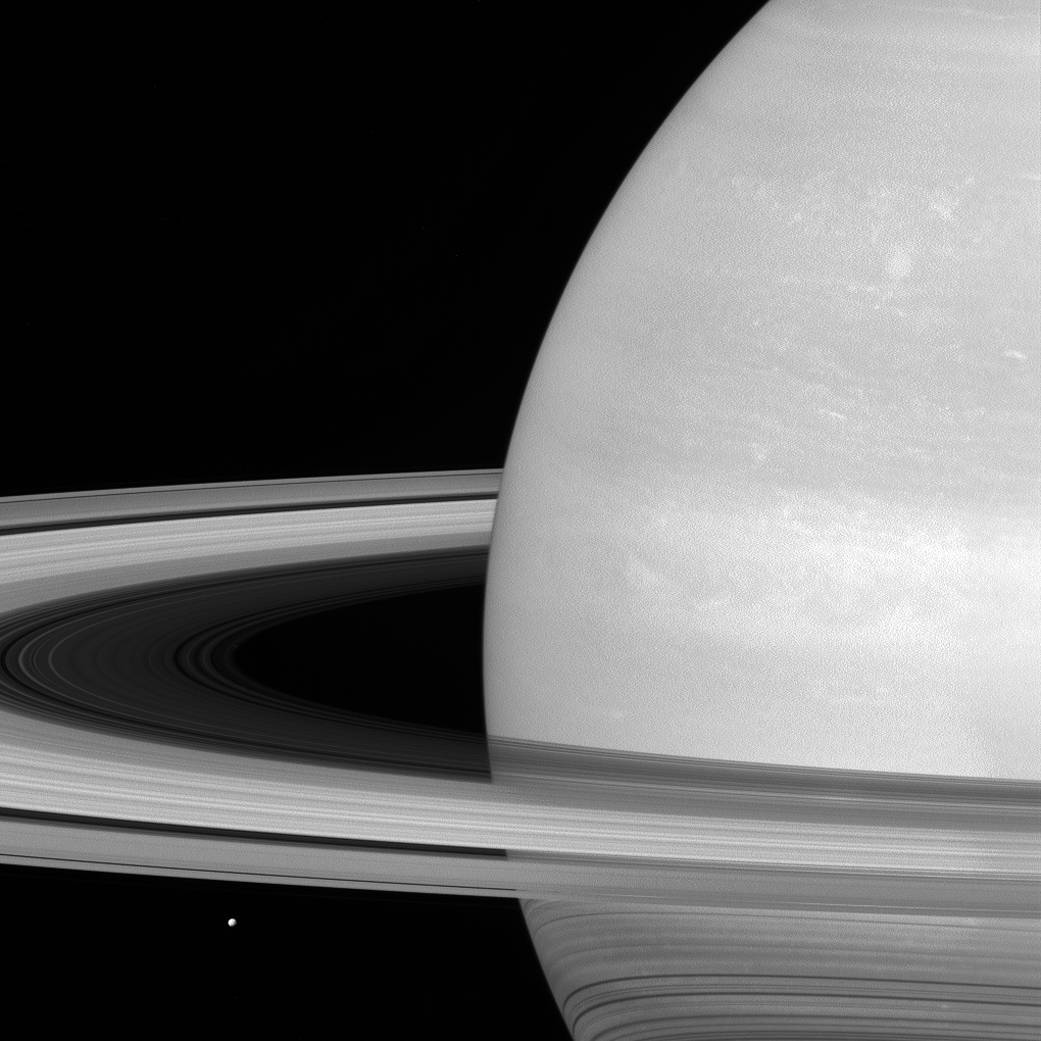Saturn's Rings Dwarf Tiny Moon Mimas in Stunning NASA Photo

Saturn and its rings exude a stately presence in this amazing photo from NASA's Cassini spacecraft, making it easy to overlook the diminutive moon in the lower left corner of the view.
The moon, Saturn's icy satellite Mimas, seems tiny compared to the vast rings of the sixth planet from the sun. Mimas, at 246 miles (396 km) wide may actually outweigh the rings, by a lot. The disks surrounding Saturn consist of minute, ice-bound particles spread into a relatively thin plane — at most the height of a house. Experts believe the total mass of the bands could either slightly outweigh Mimas, or, in a stark comparison, weigh only a fraction of the tiny moon's mass. [See more photos of Saturn's glorious rings]
As Cassini winds down its mission at Saturn, it will graze the planet's rings so scientists can measure their mass by tracking the craft's radio signals.
This image, which NASA released on Monday (Nov. 28), was actually captured by Cassini's wide-angle camera on July 21. It showcases the sunlit side of Saturn's rings from a near 6 degree angle above the rings. At the time the image was taken, Cassini was almost 600,000 miles (910,000 km) from the planet at a phase (or sun-Saturn-spacecraft angle) of 31 degrees. The image scale is 34 miles (54 km) per pixel.
Cassini left Earth for Saturn in 1997 and has made numerous discoveries since reaching the ringed planet in 2004. The spacecraft has been collecting data for close to 20 years (including its cruise to Saturn) and will continue retrieving never-before-seen detail of the planet and its rings until the end. As it begins its grand finale in April 2017, Cassini will image Saturn's rings from just over 1,000 miles (1,600 km) before the team has planned its descent to the great planet in September 2017 in order to protect Saturn's potentially habitable moons.
The Cassini mission, a collaboration between NASA, ESA (the European Space Agency) and the Italian Space Agency, was designed and is managed by the Jet Propulsion Laboratory in Pasadena, California while the imaging operations center base is at the Space Science Institute in Boulder, Colorado.
Follow us @Spacedotcom, Facebook and Google+. Original article on Space.com.
Get the Space.com Newsletter
Breaking space news, the latest updates on rocket launches, skywatching events and more!
Join our Space Forums to keep talking space on the latest missions, night sky and more! And if you have a news tip, correction or comment, let us know at: community@space.com.

Christine Lunsford joined the Space.com team in 2010 as a freelance producer and later became a contributing writer, covering astrophotography images, astronomy photos and amazing space galleries and more. During her more than 10 years with Space.com, oversaw the site's monthly skywatching updates and produced overnight features and stories on the latest space discoveries. She enjoys learning about subjects of all kinds.









